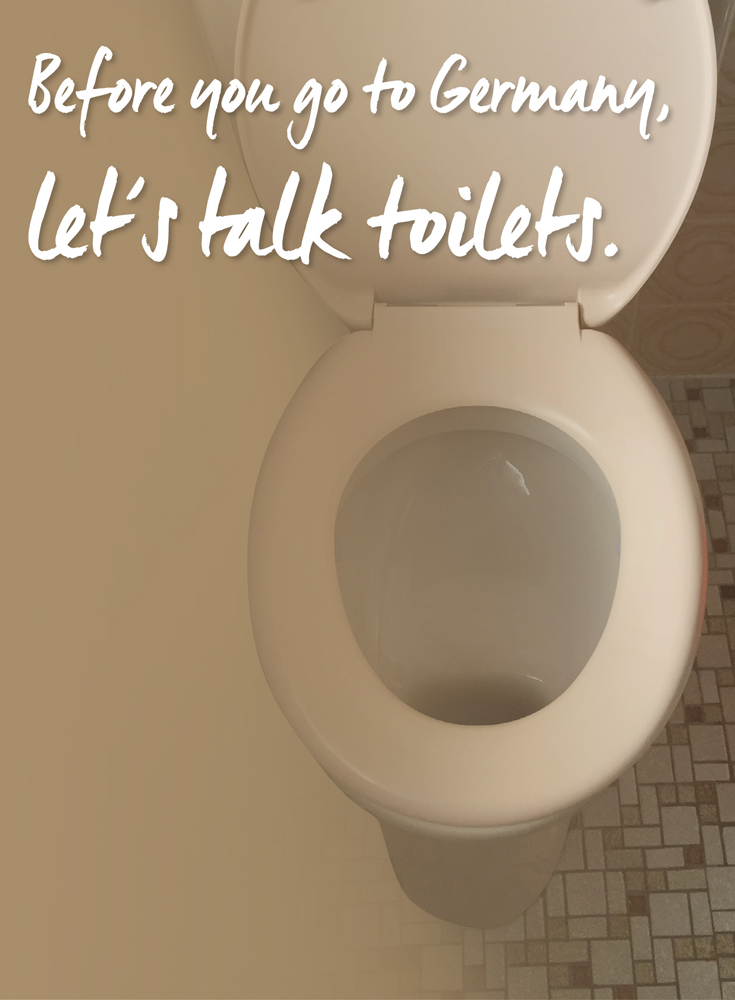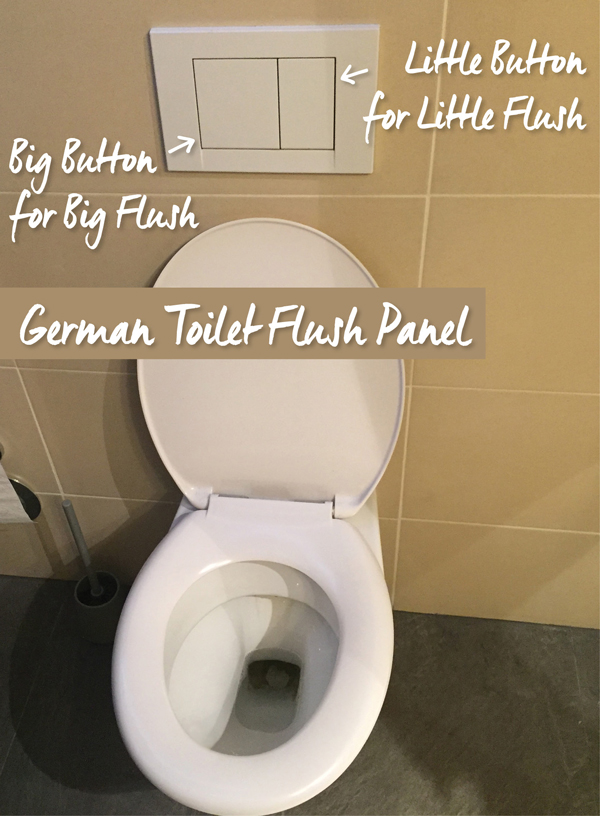Disclosure: Please note that some links are affiliate links, and at no additional cost to you, we earn a commission if you make a purchase.
If you would like to support this website in some way, using these links will help do exactly that.

During a family dinner, just before my mother-in-law would travel to Germany for the first time, the issue of German toilets came up. Denise was telling her Mom the story of her first flight to Germany, which led to her first visit to a German restroom at the Frankfurt Airport.
I remember that it took Denise quite a while to come back and when I finally spotted her she had a perplexed look on her face. She said she had looked in the first bathroom stall and saw the toilet bowl had no water in it. Must be clogged, Denise thought, and tried the next stall. When she looked in the fourth stall, she decided to go for it, even though she was convinced that a toilet without standing water must be broken. She was pretty surprised when it did flush after all.
How to explain the toilet setup difference to your American mother-in-law? Well, there’s a YouTube video for everything, and this is the first one I found while trying to explain the difference. Not only do you get to see the toilet, but also a German sausage that gets flushed to illustrate the process.
This shelf toilet, known in Germany as Flachspüler (flat flusher) has a ledge where the American design, Tiefspüler (deep flusher) has standing water. The shelf toilet will prominently present your #1 or #2 before you flush them, which will take some getting used to when you first encounter this toilet style.
Over the years I had the pleasure of using both systems and can give you the advantages and disadvantages of the shelf toilet for your trip to Germany.
Advantages:
• Energy costs in Germany are much higher than in the United States, which includes the cost of water. Therefore, the shelf toilets were designed to use much less water than their American counterparts - hence the shelf.
• Your butt will not get wet, since there is little to no water sitting on the shelf
• If you are sick, you can look at your prized matter before flushing it or even take a stool sample for your doctor. Not that you will need this often, but it is an advantage, even though a strange one.
Disadvantages:
• Your business will definitely stink up the room, which is why a lot of German bathrooms have a bottle of air freshener near the toilet or at least a window nearby that you can open.
• With a #2 being flushed off the ledge, it might leave skid marks and you might have to flush a second time (so much for the aspect of saving water). If the skid marks are still around after the second flush, look for a toilet brush nearby and go to work.
If you are still reading, you might be pleased to hear, that German households are merging more and more to the American toilet design, which has become more efficient over the past decades and uses less water with every flush.
Nevertheless, there are still two more oddities you might encounter in a modern German restroom, which are two buttons on a wall and no visible toilet tank.

How To Flush a German Toilet
Modern bathrooms in Germany have concealed flush, or wall-hung toilets, where you have the tank and water pipes in a wall enclosure hidden from plain view. This works especially well for small bathrooms, saving space by having a smaller toilet that does not protrude into the room as much as a floor-mounted traditional toilet. Furthermore, cleaning under the toilet is much easier and the hidden tank gives the bathroom a clean, organized look.
Right above the concealed flush toilets you will find two buttons, usually a small one and a large one. The “dual-flush capability” goes back to the idea of saving water, where you push the small button for your #1 business with only half of the water in the tank being used and the larger button for your #2 business with all of the water in the tank being used.
Follow Along
If you enjoyed this article, or these topics sound interesting to you, you'll love our weekly newsletter. You'll receive a free Germany Packing list for signing up, and you'll receive each week's newest posts every Friday. Thank you for reading!

